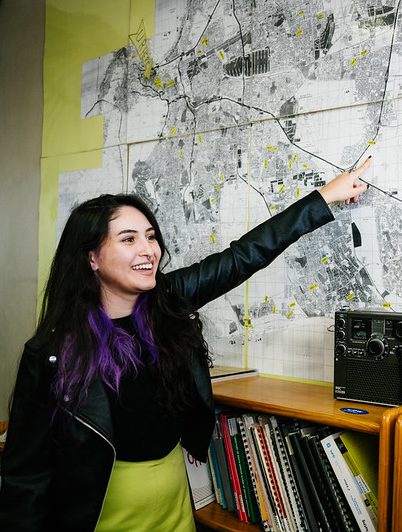RESOURCES
2024-03-13
What is a Gap Year?
In recent years, more and more students have started taking gap years between high school and college, to explore, learn, and immerse in different cultures around the world.
At Tilting Futures, we are here to help you with questions you may have, to help you answer not only “what is a gap year?” but what can taking one do for you as you wrap up your high school experience.
Written by Tilting Futures

What is a Gap Year?
The definition of a gap year put forth by the Gap Year Association is as follows:
“A semester or year of experiential learning, typically taken after high school and prior to career or post-secondary education, in order to deepen one’s practical, professional, and personal awareness.”
Simply put, a gap year is a time between high school and college where a student switches from traditional academic classroom learning to other meaningful ways of continuing their education.
Why Take a Gap Year?
In a time when college applications are more competitive than ever, and workplaces even more so, college admissions offices are looking for students with real experiences and unique qualifications that will set them apart from the crowd. A gap year of travel and personal growth can be a great way to do just that.
Benefits of a Gap Year

- Rejuvenate & refocus: Dive into new interests, returning with enhanced focus and engagement, while minimizing burnout.
- Develop Independence: Experience the world on your terms, gaining life skills and personal responsibility.
- Personal & professional growth: Boost self-confidence, communication, adaptability, and soft skills desired by colleges and employers.
- Stand out from the crowd: Differentiate your resume, expand job opportunities, and access financial aid with unique experiences and connections.

What Is— And What Isn’t— A Gap Year Program?

A gap year allows you to learn as much about yourself as you do about the world, and in turn improves your education and your career. But in order to answer “what is a gap year,” it is probably easier to start by defining what it is not. There are a lot of misconceptions surrounding the concept of a gap year, so let’s tackle a few of them right now.
It’s not a “gap.”
At Tilting Futures, we don’t like to think of the year after high school and before college as a “gap” in the literal sense. A gap is an empty, wasted space, and this time in your life should be the exact opposite. Instead, we think of a gap year as a bridge or an opportunity, carrying you from one phase of your life to the next. With the right design, a gap year becomes a launching pad for success in college and beyond.
It’s not a remediation.
It’s a selective program designed for driven youth who want to enter college with the advantage of real-world experience.
It’s not just a volunteer program.
While you will be making a positive impact on the local community through your involvement with a local organization, think of it more as an apprenticeship. Rather than coming in to “save” a community, you’ll be learning new skills and perspectives by working alongside locals on projects that matter to their community.
It’s not studying abroad.
You will learn a lot. And you can sometimes even earn college credits. But this is not a study abroad program where your school work continues, just in a new location. This is a real-life experience abroad where you learn lessons that cannot be taught in a classroom. With a gap year, you aren’t just a student of a new culture, you become part of it.
Gap Year vs Gap Semester
Gap Semester
A gap semester is a shorter break from traditional education or work, lasting a few months. It offers a chance to explore new avenues, and focus on personal and professional growth within a condensed time frame. It allows for self-reflection, skill development, and unique experiences, providing a valuable opportunity for individuals to invest in their personal journey and put their best foot forward for the future.
Gap Year
A gap year is a year-long program from formal education or work. It offers an immersive experience of self-discovery, cultural exploration, and skill enhancement. While both gap years and gap semesters are valuable, their main difference is the amount of time gaining real-world experience.
When Should You Take a Gap Year?

No rigid rules dictate when to take a gap year. However, certain natural breaks in education and career paths offer excellent opportunities. While traditionally popular after high school or college, gap years are growing in popularity for a variety of ages.
Ideal Gap Year Moments
- After high school: Seize the chance for self-discovery, travel, and exploring passions before continuing education.
- During college: After a year or two, a gap year allows reevaluation and renewed commitment. Priorities may shift, offering a fresh perspective on your education and future ambitions.
- After college: Before starting work, embark on an adventurous journey. A gap year enhances both personal growth and resumes, refining essential skills and potentially changing life’s trajectory.
To be eligible for Tilting Futures’ immersive learning program: Take Action Lab, you must be between the ages of 17-21 and have graduated from high school before the program starts. Students worldwide are encouraged to apply!



